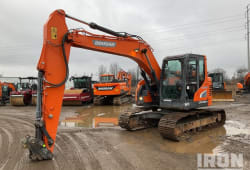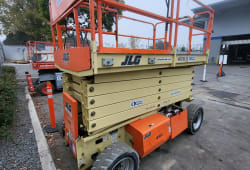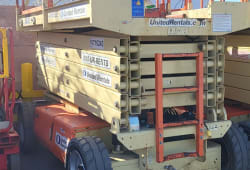New CDL Rule Concerns Some Businesses Using Class A
6 Min read
)
November 4, 2022
In February, the federal government passed new regulations for commercial drivers requiring them to receive behind-the-wheel training with a licensed commercial vehicle instructor that uses a curriculum the federal government has approved. These new regulations are now becoming a burden and causing concern for many employers who use Class A vehicles on a daily basis but are not dedicated motor carriers.
What Were the Rules Before?
Before the new regulations took effect in February, getting a CDL was virtually the same as getting a regular driver's license. Students received an instructional book to study from, took their test, and were on their way. Before hitting the road, students would have to pass an inspection to make sure they understood all of the technicalities of operating a Class A vehicle, but the training for a commercial driver's license has always been relatively cut and dry.
The school bus employer would provide the training in-house and give the students a timeline for when they should expect to have their CDL license. In the meantime, students would ride the school bus with another driver who had their CDL license.
Now carriers must register as a TPR-approved training provider to train new employees seeking a CDL. The TPR training provider registry provides a list of compliant training provider programs. Once the student completes their training, the school or training provider will file their information with FMCSA.
Existing Class B CDL Applicants
For those holding an existing Class B CDL, staying abreast of entry-level driver training is crucial. With the evolving landscape of regulations, understanding the nuances of the FMCSA's training requirements is vital. Training providers registered on the FMCSA Training Provider Registry play a pivotal role in shaping competent CDL applicants. This holds particular significance for those transporting hazardous materials, where adherence to stringent safety protocols is paramount. Whether a seasoned driver or a newcomer, ongoing education through reputable training providers ensures compliance and proficiency in the ever-changing world of transportation.
Entry Level Driver Training Provider Registry
Entry-level driver training is a foundational step for CDL applicants, especially those aspiring to handle hazardous materials. The FMCSA Training Provider Registry serves as a valuable resource for identifying reputable training providers. Whether upgrading an existing Class B CDL or starting afresh, comprehensive training is key to mastering the skills required in the transportation industry. As regulations tighten, entry-level driver training becomes not only a requirement but a catalyst for creating a safer and more proficient cadre of drivers in the ever-evolving landscape of transportation.
The Burden On the Employer
The main burden being placed on employers is the cost of training. Prior to taking their CDL test, employees must study through regulated schools and go through a course. These schools can set their own fees and structure for the training which can cost anywhere between $4,200 and $5,500.
For construction companies, training courses may last as long as ten weeks, with students participating five days a week. Employers receive training and must pay their employees during this time out of the office. Previously, employees had the option to receive their training on the job and could study and do their bookwork during downtime or breaks. The new training process frustrates both employers and trainees, despite any benefits that come with the new instruction.
The student will complete their course but still can only be certified once they take their test with the DMV. In the past, the test was all that was needed. Employers are wondering why it's now necessary for new employees to take a course first.
Smaller Companies Hit the Hardest
The demand for CDL drivers is at an all-time high, but the new federal regulations make it more difficult for companies to have training providers find skilled drivers. Smaller companies previously offered training for new employees; however, these new regulations are creating yet another hurdle for those looking to get their foot in the trucking or construction industry. Aspiring employees can no longer come off the streets and find an employer for on-the-job training. Those interested may be dissuaded by the fact that they now have to complete a 10-week-long training.
These new restrictions make it more difficult for employers to have training requirements and find quality drivers. Why? Many people are more likely to choose a different career path if they are not interested in extensive training.
With the demand for skilled commercial drivers being at an all-time high, many employers feel that now is not the time to place such regulations on those in need of employees with a CDL. The construction industry, in particular, is suffering due to the new requirements.
The new regulations have forced companies that use Class A vehicles to completely restructure their CDL training. Getting new employees hired who do not come through the door with a CDL in hand has proven to be a struggle. It has become a nationwide disruption for commercial driver's licenses and has many potential employees reconsidering their careers. With the state of the market the way it is, frustration levels are high. Many feel that now is not the time to make it more difficult for an already vacant industry to bring in skilled drivers.
Although many employers have anticipated these changes, some find it difficult to adapt. Many industries that use Class A vehicles have relatively high turnover rates, which could put even more stress on the team as they struggle to bring new drivers to the existing class and replace those in the existing class who have either retired or chosen another career path.
On the other hand, some companies find that for experienced drivers looking to upgrade their license, the course serves as a great refresher and will benefit their team. The primary concern is from companies that need to hire several new entry-level drivers. They are hindered by the entry-level drivers and the extensive amount of time it will take to have them on board and independently operating their Class A vehicles.
Here's a table summarizing the concerns businesses have regarding the new CDL rules for Class A vehicles:
:format(webp))
In conclusion, the concerns surrounding the new CDL rules for Class A vehicles highlight the significant challenges faced by businesses, particularly in the transportation and construction industries. The imposition of costly training requirements, restructuring of training processes, and the impact on small companies underscore the disruptive nature of the regulations. Moreover, the difficulty in hiring new drivers, nationwide disruption in CDL training, and adaptation challenges for some employers further exacerbate the situation. As industries reliant on Class A vehicles strive to navigate these challenges, it becomes evident that collaborative efforts and innovative solutions are necessary to address the evolving landscape of commercial driver licensing effectively.














